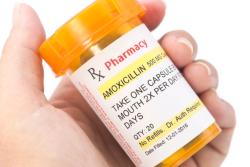Test Your Knowledge (Answers): Patient-Centric Care Through Oral Liquid Delivery
1. According to the article, what is a primary objective of patient-centric drug development?
A. To streamline the regulatory approval process by prioritizing formulations with the longest shelf life.
B. To improve treatment adherence and health outcomes by focusing on patient needs and preferences.
C. To increase the bioavailability of active pharmaceutical ingredients (APIs) above all other factors.
D. To reduce the overall cost of manufacturing by using more common excipients.
2. For which patient population are thickened liquid suspensions particularly beneficial as a safety measure?
A. Patients with chronic conditions requiring extended-release formulations.
B. Pediatric patients who are sensitive to the taste of medications.
C. Patients with dysphagia who are at risk of aspiration.
D. Geriatric patients experiencing polypharmacy.
3. In the development of an oral suspension, omitting a suspension aid like xanthan gum could most likely lead to what consequence?
A. Oxidative degradation of the active pharmaceutical ingredient.
B. Rapid microbial growth throughout the product's shelf life.
C. Inconsistent dosing due to precipitation or sedimentation of the API.
D. An unpleasantly sweet taste, leading to poor patient compliance.
4. What key rheological property, demonstrated by colloidal MCC in the case studies, allows a suspension to flow easily when poured but regain its structure during storage?
A. Thixotropic behavior
B. Solubility
C. Homogeneity
D. Anionic character
5. In Case Study 1, how did the stability of the paracetamol suspension formulated with NaCMC compare to the others after four weeks, as measured by the TURBISCAN stability index (TSI)?
A. It showed moderate stability, comparable to the xanthan gum formulations ranked 'C'.
B. It demonstrated moderately good stability with a rank of 'B', similar to the reconstitutable suspension.
C. It was the most stable formulation, with the lowest TSI and a rank of 'A+'.
D. It was not stable and received the lowest stability ranking of 'D'.
6. According to Case Study 2, what was the primary challenge when formulating an ibuprofen suspension with pre-made liquid colloidal MCC at a low pH (approximately 2.7)?
A. Poor taste that could not be masked by flavoring agents.
B. Degradation of the ibuprofen active ingredient.
C. A significant and unmanageable increase in viscosity.
D. Flocculation of the colloidal MCC, leading to instability.
7. In Case Study 3, what strategy was successfully employed to stabilize a pre-made liquid colloidal MCC suspension containing a high concentration of calcium chloride?
A. Adjusting the formulation to a much lower pH.
B. Increasing the concentration of colloidal MCC in the formulation.
C. Replacing the pre-made liquid colloidal MCC with NaCMC.
D. Adding a protective colloid, such as xanthan gum.
8. Which type of oral liquid drug delivery system is defined as a homogeneous mixture where the drug is completely dissolved in a solvent?
A. Solution
B. Emulsion
C. Sachet
D. Suspension
9. The article projects significant growth for the pharmaceutical liquid suspensions market, identifying a key demographic driver. What is this driver?
A. A projected increase in childhood diseases requiring long-term medication.
B. The near doubling of the world's population older than 60 by 2050.
C. Increased regulatory preference for liquid formulations over tablets.
D. A rise in demand for on-the-go medications for young adults.
10. What is the primary function of excipients categorized as stabilizers, such as sodium metabisulfite or sorbic acid?
A. To enhance the solubility of poorly water-soluble drugs.
B. To protect the formulation from chemical or microbial degradation.
C. To mask unpleasant tastes and improve the medication's palatability.
D. To maintain uniform distribution of insoluble particles.




